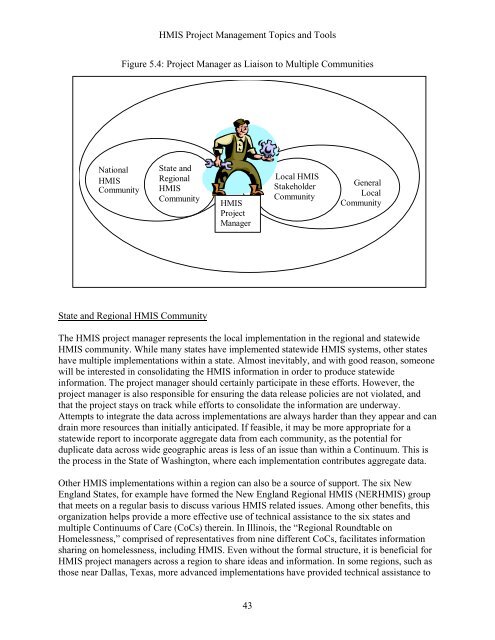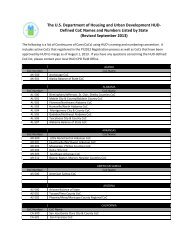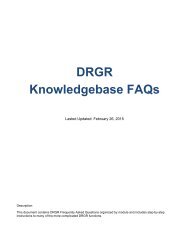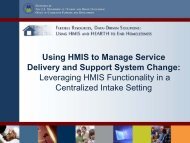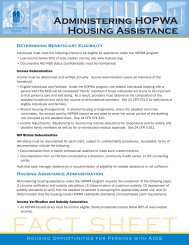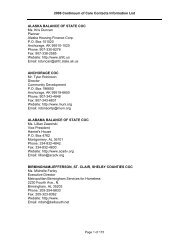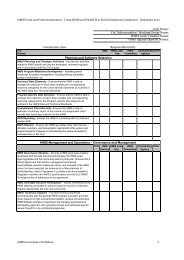HMIS Project Management Topics and Tools - OneCPD
HMIS Project Management Topics and Tools - OneCPD
HMIS Project Management Topics and Tools - OneCPD
- No tags were found...
Create successful ePaper yourself
Turn your PDF publications into a flip-book with our unique Google optimized e-Paper software.
<strong>HMIS</strong> <strong>Project</strong> <strong>Management</strong> <strong>Topics</strong> <strong>and</strong> <strong>Tools</strong>Figure 5.4: <strong>Project</strong> Manager as Liaison to Multiple CommunitiesNational<strong>HMIS</strong>CommunityState <strong>and</strong>Regional<strong>HMIS</strong>Community<strong>HMIS</strong><strong>Project</strong>Manag erLocal <strong>HMIS</strong>StakeholderCommunityGeneralLocalCommunityState <strong>and</strong> Regional <strong>HMIS</strong> CommunityThe <strong>HMIS</strong> project manager represents the local implementation in the regional <strong>and</strong> statewide<strong>HMIS</strong> community. While many states have implemented statewide <strong>HMIS</strong> systems, other stateshave multiple implementations within a state. Almost inevitably, <strong>and</strong> with good reason, someonewill be interested in consolidating the <strong>HMIS</strong> information in order to produce statewideinformation. The project manager should certainly participate in these efforts. However, theproject manager is also responsible for ensuring the data release policies are not violated, <strong>and</strong>that the project stays on track while efforts to consolidate the information are underway.Attempts to integrate the data across implementations are always harder than they appear <strong>and</strong> c<strong>and</strong>rain more resources than initially anticipated. If feasible, it may be more appropriate for astatewide report to incorporate aggregate data from each community, as the potential forduplicate data across wide geographic areas is less of an issue than within a Continuum. This isthe process in the State of Washington, where each implementation contributes aggregate data.Other <strong>HMIS</strong> implementations within a region can also be a source of support. The six NewEngl<strong>and</strong> States, for example have formed the New Engl<strong>and</strong> Regional <strong>HMIS</strong> (NER<strong>HMIS</strong>) groupthat meets on a regular basis to discuss various <strong>HMIS</strong> related issues. Among other benefits, thisorganization helps provide a more effective use of technical assistance to the six states <strong>and</strong>multiple Continuums of Care (CoCs) therein. In Illinois, the “Regional Roundtable onHomelessness,” comprised of representatives from nine different CoCs, facilitates informationsharing on homelessness, including <strong>HMIS</strong>. Even without the formal structure, it is beneficial for<strong>HMIS</strong> project managers across a region to share ideas <strong>and</strong> information. In some regions, such asthose near Dallas, Texas, more advanced implementations have provided technical assistance to43


